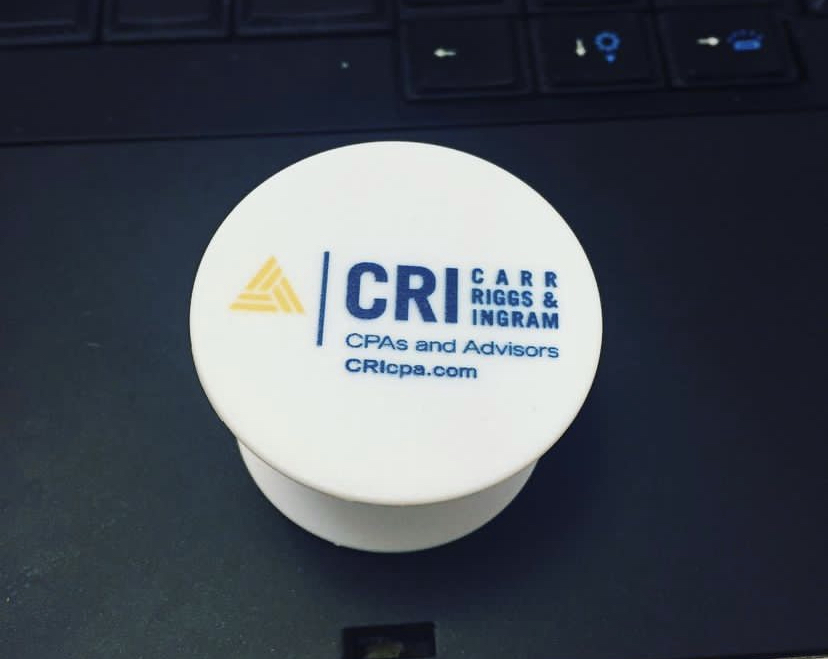Recently, I had the honor to speak to the CEO’s and COO’s of the majority of the Top 100 CPA firms the AICPA Major Firms Meeting in Laguna Beach, California. Below is a summary of the top thoughts from that presentation:
The number one problem with firm’s succession planning is they still aren’t recruiting enough future leaders. We are still looking at GPA and eliminating the B and C students. I find when I consult with firms (no disrespect to the A students!) that the B and C students are typically the ones running the firms and for sure the primary business getters and client handlers.
In the accounting profession, the biggest “ringing of the bell” is when we bring in a new client. In the financial services industry, their biggest “ringing of the bell” is when they “steal a star recruit” from a competitor. Maybe we readjust what’s most important for us. I still don’t think firm’s CEO’s are devoting enough time to being a talent scout. We all know, great talent produces great clients and future leaders.
The profession is about to enter what has been termed the “Fourth Major Industrial Revolution”. Artificial intelligence and robotics will replace much of what entry level accountants have typically done. We will be moving from a leverage model that historically has been a triangle or pyramid to a new one that will resemble more of a diamond shape. One of the Big Four accounting firms recently said that they project new hires out of college could drop by as much as 50% by 2020 due to advances in technology. Combine this with estimates that audit fees could reduce by 25% to 50% in the next five years due to new technologies such as Blockchain and you have the perfect storm – A MAJOR CHANGE is about to hit the profession. On the positive, the AICPA leadership has done an awesome job of getting firms to understand the changes and providing advice on how to recreate their firms.
The ratio of non-equity partners (to equity partners) will increase significantly over the next five years. Simply stated, many newer, and younger partners today don’t see equity partner status as the “end all” nor do they like the significant buy in (capital contribution) that typically goes with it. Non-equity partners today come in many shapes and sizes. They could be younger partners who eventually will become equity partners; they could be non-equity partners where this may be their “final resting place”; it could also be “merged in” partners (typically on the older side); and lastly it could be lateral partners recruited in (giving both sides some time to decide if it is a proper fit before moving to equity partner status). The bigger issue here though is that due to the major investments in technology (described above) that will need to be made, required capital from partners will probably be increasing dramatically, BUT with fewer equity partners available to fund these changes, this could present a major challenge to firms.
The number one reason succession planning fails at firms starts with the retiring partner. Often, the retiring partner has been listening too much to Carly’s Simon’s old hit songs like, “Nobody Does It Better’ and “Your Too Vein”. The truth is if that if a partner died tomorrow, the client wouldn’t go out of business. They would find another CPA firm to do their work. We need to remind our retiring partners that the reason we pay them deferred compensation (goodwill) is for the legacy they leave behind (in this case, the client base). All we are asking for here is their help so we have a meaningful edge on the competition when they retire! I referenced Heidi Gardner’s book called, “Smart Collaboration” which talked about the difference between “body snatchers” and “lone wolves”. Body snatchers involve multiple people working on the client so the client has multiple touch points and resources to draw on. Lone wolves on the other hand shield all others from the client and make transition close to impossible. The obvious question is, “why do we allow this to happen and then add insult to injury by paying these partners deferred compensation – I just don’t get it! I urged firms to draw a hard line here with retiring partners and at a minimum add a penalty clause to the partnership agreement for poor behavior when a retiring partner doesn’t do their part to properly transition clients.
The other big reason succession fails at firms is the retiring partner never invests in a “corporate sponsorship”. A corporate sponsorship takes place when the retiring partner goes to all of their clients (with the partner taking over the accounts!) and provides a “big time” endorsement such as, “I just want you to know that this person is actually smarter than me and you will be amazed at the level of service they will providing you. They are the “real deal’!
Too many partnership agreements are still too vague when it comes to the non-solicit provisions. Firms should have strict penalties for stealing talent (like one times the departing employee’s compensation) and better identify what services a retired partner can and can’t provide to clients after they leave the firm. We still see agreements that don’t reference potential clients that the firm has met with as assets of the firm (and that fall under the non-solicit provision).
On the issue of leadership which is an important part of succession, the CEO (or Managing Partner) should be one of the highest paid partners in the firm. If they aren’t, then you either don’t have your best “player” in the position or you simply don’t value the position all that much and it’s more of an administrative position (vs. a leadership or management role). I recently came across a great quote on leadership succession which was, “You are not a LEADER until you have produced another LEADER who can produce another LEADER”.
The firm’s COO has “quietly” become one of the most important positions in the firm. This position has truly enabled the CEO to do the type of leadership things that CEO’s historically didn’t do because they were bogged down with too many administrative things. We also need to pay these people what they are worth and it’s worth a lot.
I compared CPA firms to Law firms and asked why Law firms publicly share their average equity partner compensation when they report their profitability in publications like the American Lawyer. CPA firms go to great measures to “hide” this information from their associates and potential recruits. It may not be “all about the money” but the leaders of these great Law firms will tell you that this metric gives them a major recruiting advantage when going after top talent. “I’m not saying to go out and brag but at least find a way to really let them know how financially successful a partner can be at your firm.
We also talked about the famous baseball General Manager, Billy Beane of the Oakland A’s and his speech at the Winning Is Everything Conference www.winning-is-everything.com. Billy said they had a strategy and formula to replace underperformers with lower cost talent and if they weren’t performing to ultimately replace them. He observed that at CPA firms for some crazy reason we hold onto this underperforming talent. The two questions that I then asked were:
- If emotions and “push back” didn’t matter, how many of your current equity partners would you move tomorrow to non-equity status if you could; and
- How many in your “farm team” (future and typically younger stars), would you move up immediately to the “big leagues” tomorrow If you could.
In closing, speaking at this conference was a thrill of a lifetime for me. Looking at all of the great leaders in the room at one time felt like I was at the Hall of Fame in Cooperstown, Canton, and Springfield.
Special thanks to Barry Melancon and the AICPA, Randy Myeroff (MFG Chairman and CEO of Cohen & Company), and Denny Schleper (MFG Meeting Chair and CEO of CLA) for giving me the privilege to speak to this awesome group of leaders!
Allan Koltin is the CEO of Koltin Consulting and can be reached at (312) 662-6003 www.koltin.com
Thanks for reading CPA Practice Advisor!
Subscribe Already registered? Log In
Need more information? Read the FAQs




